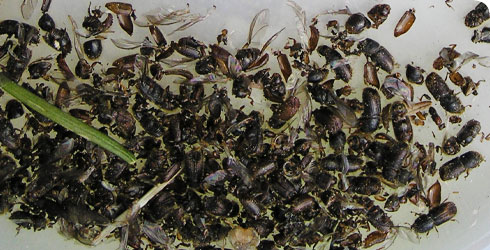Future study and control
The study of host-pathogen interaction, as well as the vector (Ips typographus) is one of the key tools in managing pest outbreak and damage to the Norway spruce. Research into genomics will help scientists to understand what genes are important for resistance to the host.
Molecular study will help to isolate resistant as well as susceptible stands of Norway spruce which in turn will inform pest management for the future.
Pest management of Ips typographus can be carried out effectively and in an environmentally-friendly manner by methods of control based on scientists' knowledge of insect-chemical communication. The development of negative semiochemical signals away from host selection of the bark beetle have proved more successful in some cases than the more traditional approach of mass trapping with pheromones.
Natural enemies such as the Eurasian 3-toed woodpecker (Picoides tridactylus) predate on the larvae of bark beetles. Though successful in maintaining equilibrium amongst species, natural enemies such as this bird could not mitigate the effects of a serious pest outbreak.
